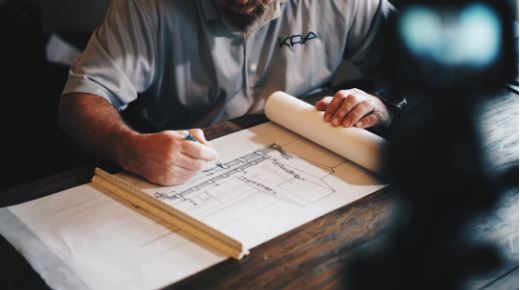Revamping your living space can be an exhilarating experience that adds value both aesthetically and financially to your home. Whether you are considering a minor facelift or a comprehensive overhaul, understanding the fundamental steps, current trends, and financial considerations will vastly improve the outcome. Careful planning and the right choices can transform your abode into a delightful and functional haven. Below, we explore key aspects of home updating to navigate this exciting journey successfully.
Essential Considerations Before You Begin Your Home Update
Embarking on a home update project requires a solid foundation of planning and foresight. Before any tools are lifted or designs are chosen, consider the scope of your project. Define what you want to achieve—whether it’s enhancing the home’s value, modernizing the interiors, or expanding the living space. Understanding your goals helps you make coherent decisions aligning with your home vision.
Assessing your home’s current state is crucial. This dictates how extensive your updates should be and may reveal underlying issues that need to be addressed, such as insulation, plumbing, or electrical systems. For instance, installing a Sanicompact toilet can be a space-saving and efficient solution for small bathrooms or renovations where traditional plumbing might be challenging. A thorough inspection can prevent costly surprises mid-renovation. For electrical work, always seek professional assistance; for Arlington residents requiring expert service, click here to connect with seasoned electricians.
Even with a vision in hand, it’s vital to consider your home’s existing architecture and design elements. A well-planned update complements the property’s inherent characteristics and doesn’t clash with the current structure. Moreover, bear in mind the potential need for permits or compliance with local building codes, which often play a role in renovation projects.
Lastly, contemplate longevity and flexibility in your updates. While it’s tempting to gravitate towards the latest trends, ensure your changes won’t feel outdated within a few years. Opting for timeless pieces and designs that have longevity can serve your home well into the future without necessitating further updates.
Incorporating Timeless Trends to Future-Proof Your Home
In-home updates, balancing modern trends with classic style ensures your space doesn’t become passé as fashions change. Incorporating elements such as neutral palettes, natural materials, and simple, clean lines can achieve a timeless, elegant, and enduring look. These fundamentals work across various design styles and are easily updated with small, seasonal variations.
Adapting your home to harness natural light with large windows or skylights can dramatically enhance the feel of your space while providing a trend-resistant feature. Additionally, investing in quality fixtures and finishes adds a level of sophistication that does not wane. High-quality materials often stand the test of time better than their cheaper counterparts.
Plants can make a big difference when it comes to adding an element of life to your interiors. However, not everyone has a green thumb or the time to care for them. In such cases, opting for a tasteful fake pot plant can bring the same aesthetic benefit without the upkeep. Their realistic appearance and longevity make them an ideal choice.
Focusing on energy efficiency is also wise when considering longevity in home trends. Features such as smart home technology, energy-efficient appliances, and sustainable materials are good for the environment and can be selling points in the future. These choices reflect a growing consciousness towards eco-friendly living, which is more than a mere trend—a shift towards responsible homeownership.
Budgeting Smartly for Your Home Renovation Project
Financial planning is the backbone of any successful home renovation project. Setting a realistic budget at the outset ensures you can complete the project without overstretching your resources. To achieve this, you must account for all aspects of the renovation, including materials, labor, contingency funds for unforeseen expenses and decor or furnishings to finalize your updated look.
It’s advisable to research current costs for materials and labor. Prices fluctuate based on demand, availability, and economic factors, so up-to-date information is crucial for accurate budgeting. Don’t forget to factor in the cost of any necessary permits or inspections required by your local jurisdiction.
To keep your budget in check, prioritize the most impactful updates first. These might include structural repairs or improvements that increase your home’s functionality and sustainability. Avoiding unnecessary extras can mean the difference between a project finishing within budget and one that spirals out of control financially.
Be prepared to flex as the project progresses. While you should stick to your budget as closely as possible, unexpected challenges can arise. A contingency of around 10 to 20% of your budget can save you from stress and halts in progress should you encounter any surprises.
Altogether, embarking on a home update project necessitates careful planning, thoughtful consideration of timeless trends, and prudent financial management. Integrating these essential elements allows you to transform your living space into a harmonious haven that seamlessly blends functionality, style, and lasting value.




